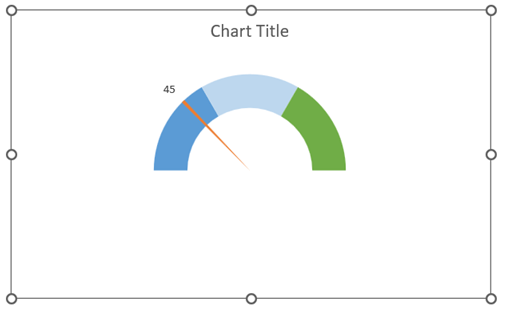- Take sample data as below, here we take two tables – one for the speedometer and another for the pointer in the chart.
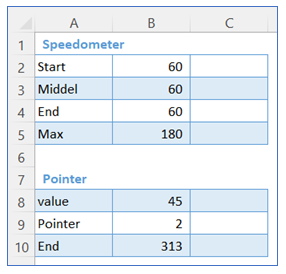
2. Select any cell of the first table then go to the ribbon, select Insert, and select your chart type from the chart group.

3. Select Chart type as Doughnut.
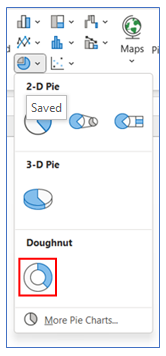
4. To change the Doughnut position, right-click on the chart and select Format Data Series.
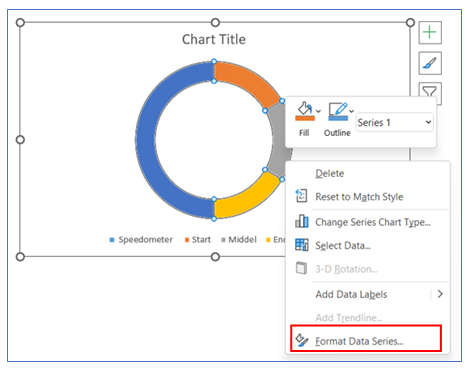
5. To change Doughnut Angle and Hole Size, go to Series Option select Angle to 270, and Doughnut Hole Size to 65%.
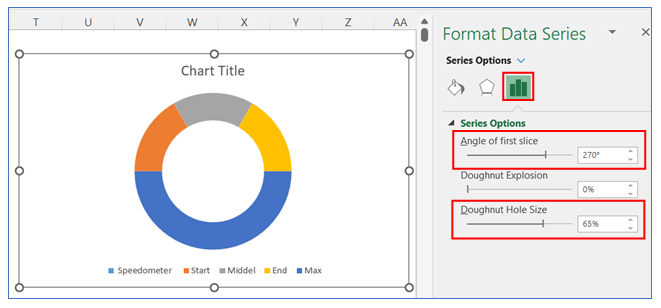
6. To remove the color of the bottom part of the doughnut, select the bottom part then select Shape Fill from Format in the ribbons and choose No Fill.
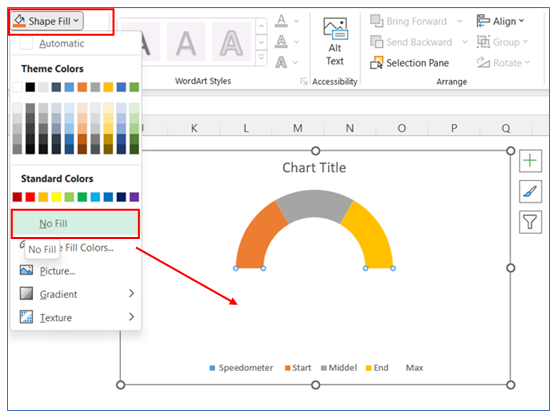
7. To change the first color in the doughnut, right-click on the chart and select Format Data, in Format Data Series select Fill and choose your color.
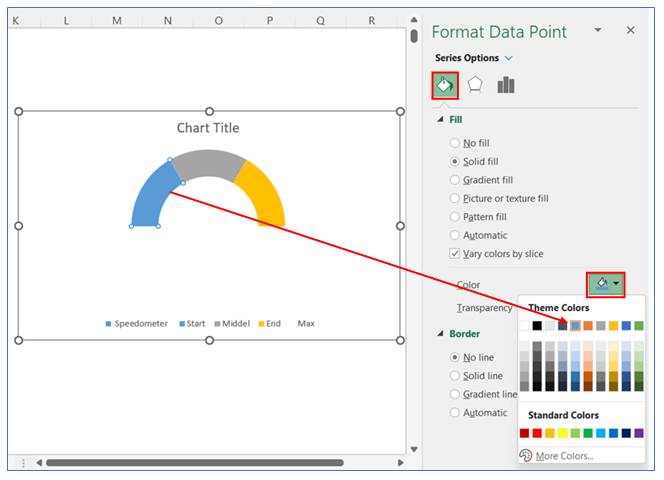
8. To change the second color in the doughnut, right-click on the chart and select Format Data, in Format Data Series select Fill and choose your color.
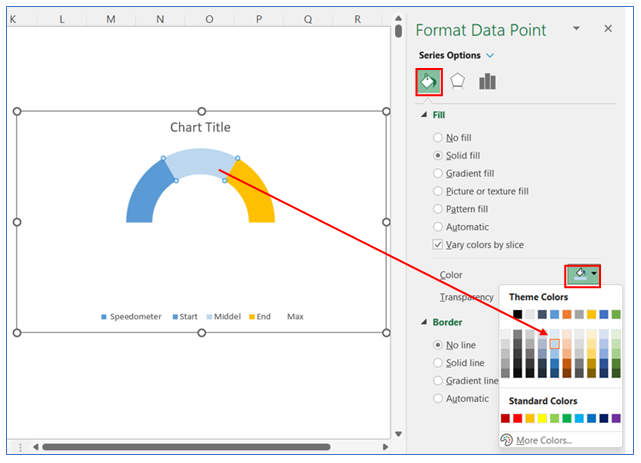
9. To change the third color in the doughnut, right-click on the chart and select Format Data, in Format Data Series select Fill and choose your color.
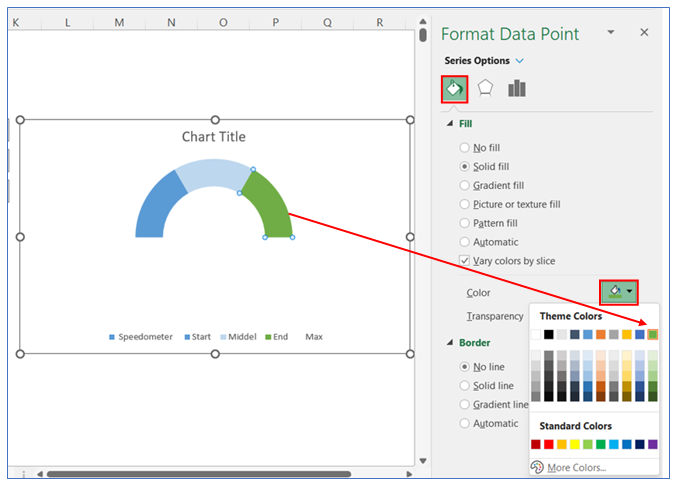
10. The Chart looks below.
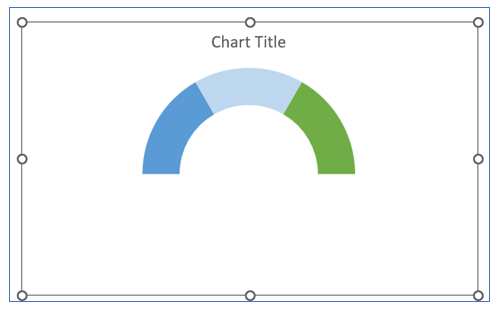
11. To add Pointer, we will add new data set from the second table. Right-click on the chart and click on select Data.
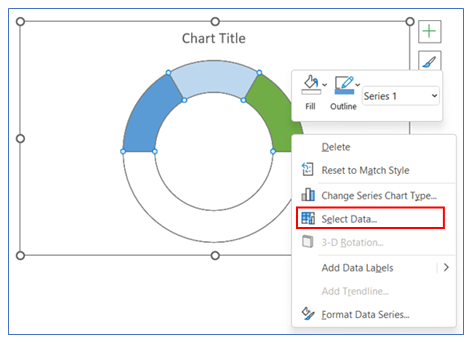
12. To add Pointer select Add, shown below.
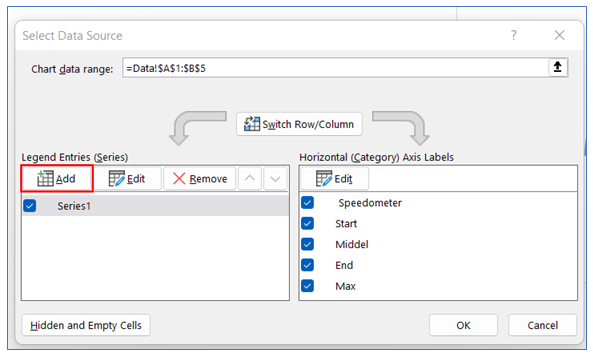
13. Now select series values from Pointer Data.
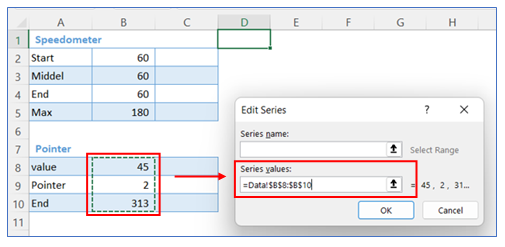
14. To change the Pointer chart type, right-click on the chart and click on Change series Chart Types.
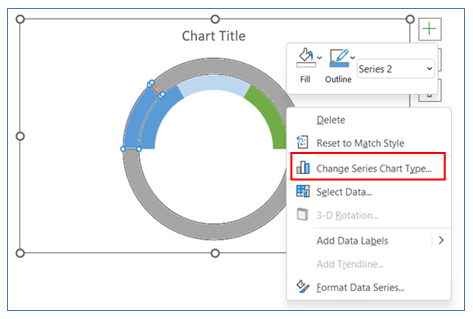
15. After that change the pointer chart doughnut to pie.
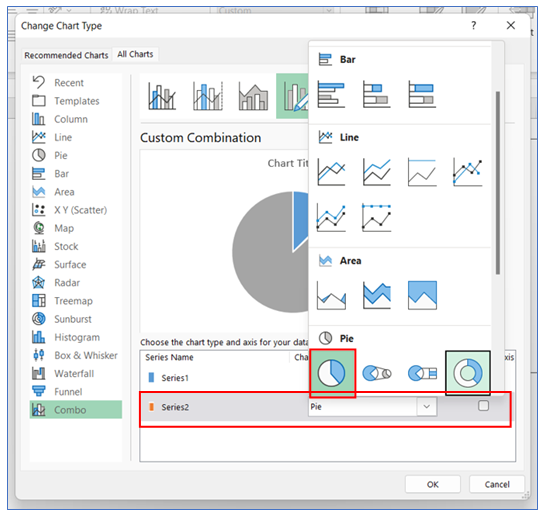
16. To change the Pointer charts axis and Angle, right-click on the chart and select Format Data, in Format Data Series select Series Option to choose Secondary Axis and change Angle to 270.
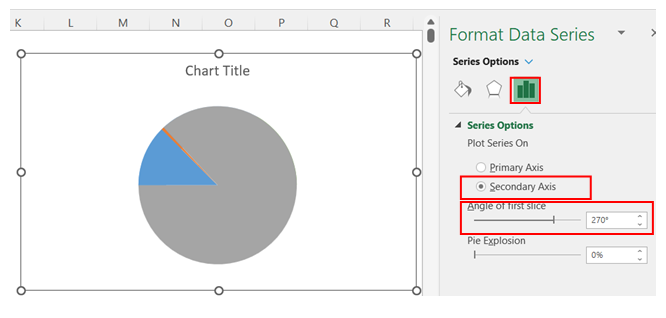
17. To change the color of the rest part in the Pointer Chart, select the chart (other than the pointer part), select Shape Fill from Format in the ribbons and choose No Fill.
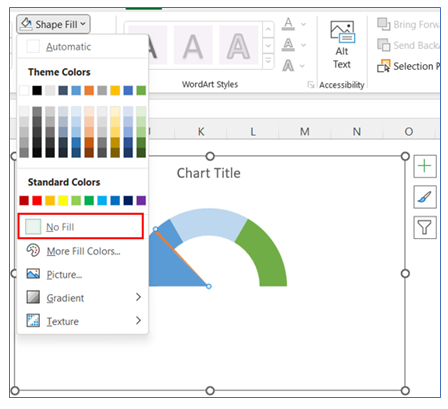
18. To change the other rest of the color of the part in the doughnut, select Shape Fill from Format in the ribbon and choose No Fill.
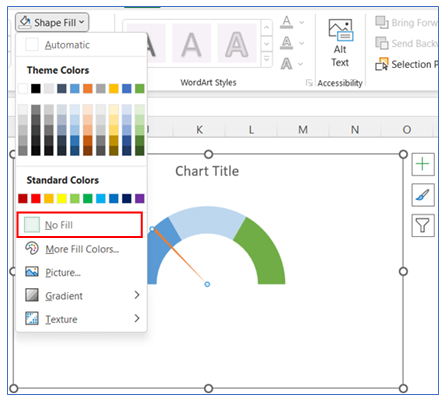
19. To give Data Labels in the Pointer chart click on your chart and select the + button to give your Data labels. Select Data labels and click on Outside End or any other option.
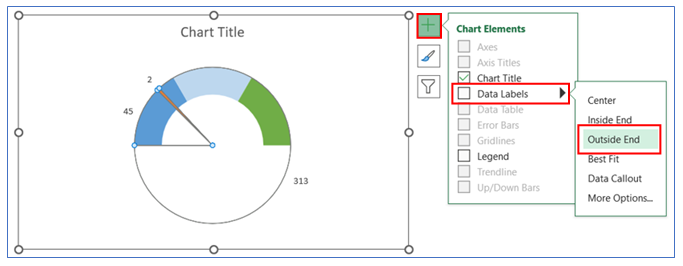
20. We keep here only Pointer data and remove the rest two data labels. Now link the Value (outcome – say, inventory holding days or receivable outstanding days) to the pointer Data label.
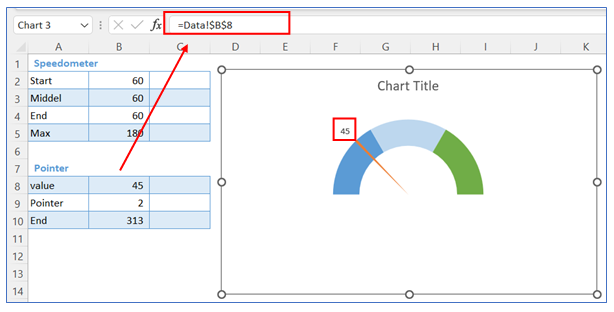
21. The Chart looks below.
